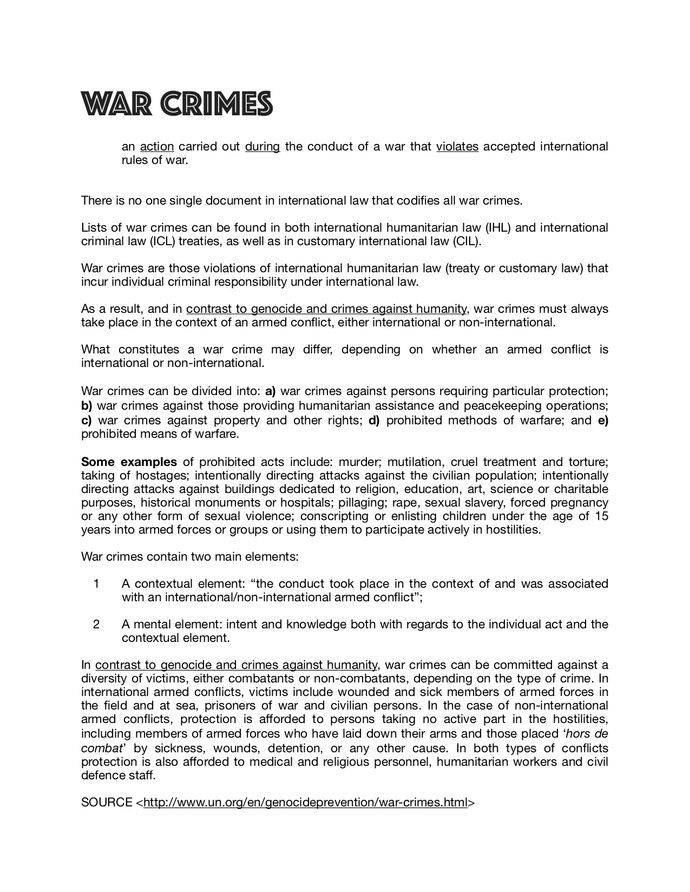
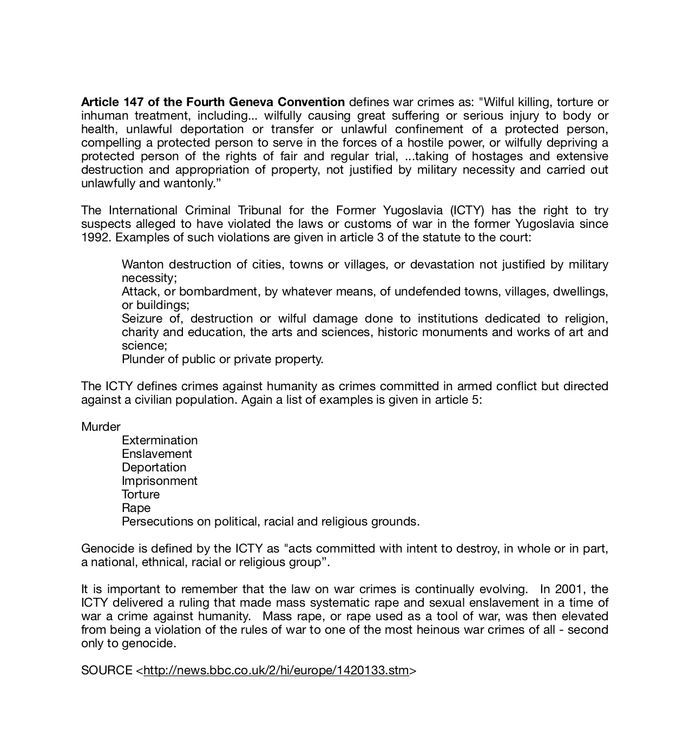




FILM ABSTRACT Inspired by Samantha Power’s Pulitzer Prize-winning book, A Problem From Hell, Oscar-nominated director Edet Belzberg presents an artistic and intellectually rigorous film on the history of genocide. Beginning with the story of Raphael Lemkin, the unsung hero who coined the phrase “genocide,” the film explores Lemkin’s passionate writing and fervent fight to have genocide recognized as a global crime. His story is told alongside four other remarkable individuals: Samantha Power, US ambassador to the United Nations; Luis Moreno Ocampo, chief prosecutor with the International Criminal Court; Benjamin Ferencz, Nuremberg prosecutor; and Emmanuel Uwurukundo, UN refugee officer. All of them are inspired by Lemkin to work towards ending the systematic elimination of a people. Spanning Bosnia, Darfur, the Nuremberg trials and the extermination of the Armenians, this film presents one of the most comprehensive and compelling looks at the history of genocide.
BIG QUESTIONS
4 DOCUMENTARY SHORTS ADAPTED FROM THE FULL LENGTH DOCUMENTARY
Facing History & Ourselves Documentary Resource for Watchers of the Sky
1. What are some of the factors that played the most significant role in who he became? What words and adjectives did you use to describe him
2. What did Lemkin define as the problem? What actions did he take to address it? What challenges did he face? How did he try to overcome them?
3. As he learned more about the Armenian genocide, Lemkin struggled with the question: “Why is the killing of a million a lesser crime than the killing of an individual?” He asked a law professor how it was possible for Turkish leaders to kill Armenians without someone from the outside stopping them. The professor compared a leader in his own country to someone who owns chickens, saying that a leader had the right to do what he/she wanted within his or her own nation. This raised the problem of sovereignty. What does the law professor mean when he gives the example of the chickens?
4. Define sovereignty. What conflict does Lemkin have with this concept? Do you think there should be limits placed on national sovereignty? How should they be established and monitored? By whom?
5, Lemkin dedicated himself to developing an international law which addresses the pattern of slaughter that he had seen throughout history. In the film he says, “Crime should not be punished by victims but should be punished by law.” What does he mean? Why is the establishment of a law important?
6. Lemkin decided that he needed a word to describe mass slaughter, one which would capture the crime and which would connote moral judgment. He chose genocide. Why would a word be important? What can you do with a word?
1. The leaders of the Allied Nations agreed that they were going to prosecute those responsible for the war and for the crimes against civilians. In August 1945, the charter for an International Military Tribunal was signed, establishing a military tribunal with judges from France, Great Britain, the Soviet Union, and the United States. This tribunal became known as the Nuremberg Trials. In many ways, this tribunal had to establish international law to address the Nazi crimes. The four crimes that Nuremberg prosecuted were: conspiracy, crimes against the peace, war crimes, and crimes against humanity. Lemkin went to Nuremberg to try to get genocide included as a crime. He failed. Why?
2. What did Lemkin mean when he wrote, “In brief, the Allies decided a case in Nuremberg a case against a past Hitler – but refused to envisage future Hitlers”?
3. Following his failure to influence the prosecutions at Nuremberg, Lemkin turned to the UN. How would you describe the expectations that many appear to have had for the UN? Watch the clips of the world leaders captured in this film. What were their hopes? What roles did they seem to see the UN playing for the world? What do you think is motivating them?
4. Lemkin lobbied ambassadors to pass a resolution and then a convention to prevent and punish genocide. How did he go about this process? How would you describe his strategy?
5. Lemkin was eventually successful in his efforts, and the Genocide Convention was passed. However, its effects remain limited. States now have to enforce the law. How does the issue of sovereignty continue to play an important role?
1. The International Criminal Court is based on the Rome Statute which was passed in 1998 by 120 countries. The ICC is a court of last resort. It addresses the gravest crimes, including genocide, crimes against humanity and war crimes. The film uses the case of Darfur, which was referred to the ICC by the Security Council, to show the challenges that the ICC faces in prosecuting these crimes. What challenges does Moreno-Ocampo face? How does he try to overcome them?
2. Why is enforcement a problem for the International Criminal Court? What are some of the issues that are raised in the Darfur case? Can you think of other examples in perhaps other cases?
3. What did Moreno-Ocampo believe that law can do for the international community? What benefits did he see it providing? Compare the obstacles faced by Raphael Lemkin in his efforts to create and ratify the Genocide Convention with the obstacle Moreno-Ocampo had to overcome. How are they similar? What differences matter?
4. In December 2014, the ICC prosecutor Fatou Bensouda dropped the investigation of “alleged war crimes in the western region [of Darfur], where the government has been trying to crush an insurgency since 2003.” How does this add to our understanding of the dilemmas that Ocampo faced?
VIDEO 4 Benjamin Ferencz: Watcher of the Sky
1. One of the significant accomplishmeents of the Nuremberg trials was the establishment of individual criminal responsibility for crimes that were committed during WWII. Ferencz explained that, for his case, he chose a group of well-educated men, many with multiple advanced degrees who were in leadership positions. How did he explain why he chose those men as compared to lower ranking members of the Einsatzgruppen? What does he mean when he says that it was a “leadership crime”? What role does Ferencz see for law in the international community?
2. In the film, like Lemkin before him, Ferencz lobbied the UN to make change. What strategies did he use? What are the challenges that he faced?
3. Ferencz told the story of Tycho Brahe. What is that story and what does it mean? What are the qualities of a “watcher of the sky”? Why do you think that it is particularly significant for Ferencz? How are Ferencz, Ocampo, and Lemkin watchers of the sky? Can you think of other watchers of the sky?
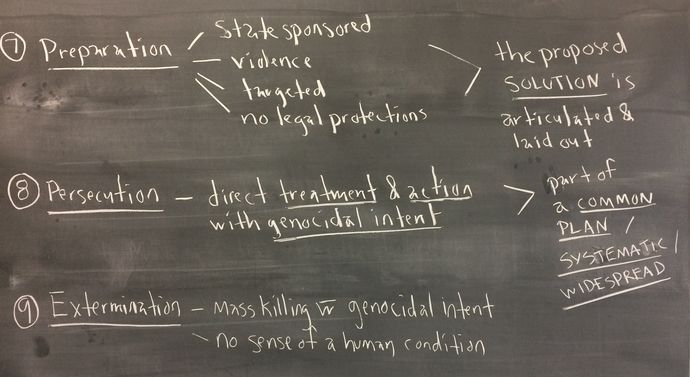








VIDEO CLIP Pol Pot: The Journey to the Killing Fields BBC Timewatch (minute 30:22 to end)
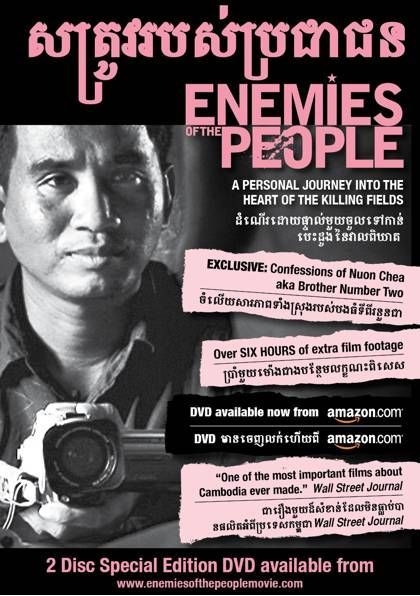
ARTICLE 11 Years, $300 Million and 3 Convictions. Was the Khmer Rouge Tribunal Worth It? The New York Times April 2017 & Related Coverage
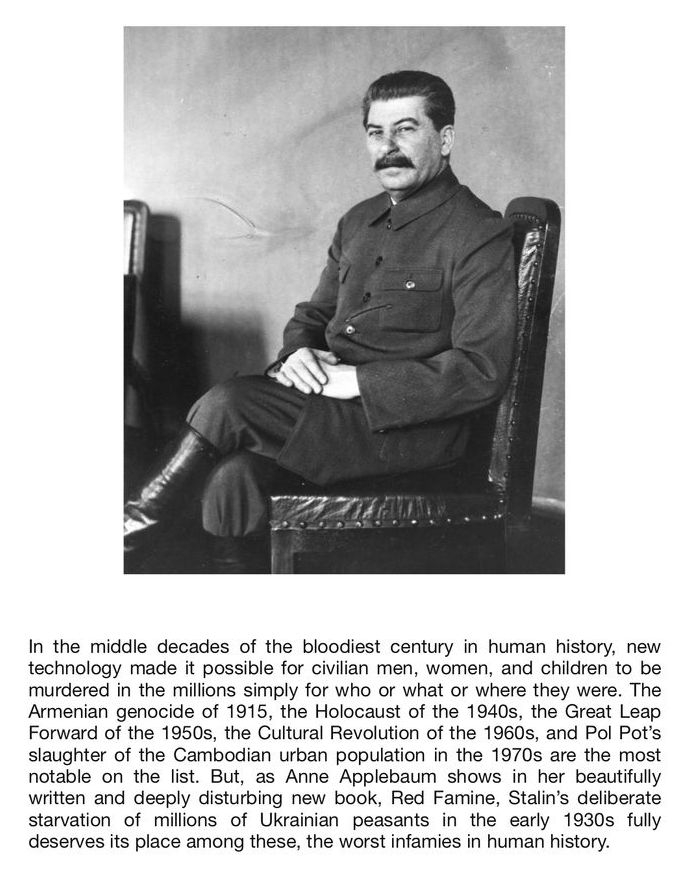


M. Bauer (ɔ) 2024